Dossier Océan et énergie - Énergie Thermique des Mers
Sommaire IOA News Letters
George Claude's Cuban OTEC
Experiment: a Lesson of Tenacity for Entrepreneurs.
by Martin G. Brown, Michel GAUTHIER, Jean-Marc Meurville.
Introduction
At the dawn of the 21st century a proposal first postulated at the beginning of the 19th century lies virtually dormant, namely "Energie Thermique des Mers" or OTEC1 as it is normally referred to today. Although the concept has been known for over a hundred years and could be of major benefit to mankind, it has so far not been exploited to any significant extent.
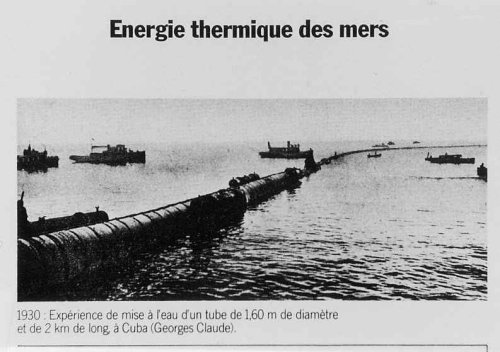
Fig. 1 Deployment of Claude's Cold water Pipe in Cuba in 1930
Given that many of the present day OTEC researchers have been working on the concept for many years it is easy to become discouraged by the lack of progress. It is here that the vision and tenacity of Georges Claude serves as an example to us all. This paper therefore illustrates some of the problems faced by Claude and shows how, in the main, he overcame them. It also points out that some of the problems experienced in the 1930's could be solved using up to date technology.
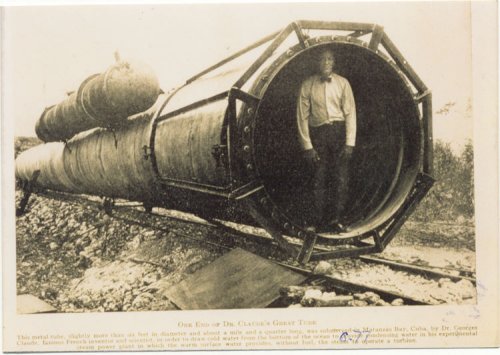
Fig. 2
ATwo2 Kilometers long pipe was installed in the Bay of Matanzas
to supply the On-shore plant with cold DOW (Deep Ocean Water)
It has often been found that new concepts are difficult to accept as they raise questions and doubts about established ideas. This applied to the proposals of Georges Claude and his fellow engineer Paul Boucherot when addressing in the 1920s the possibility to convert ocean thermal energy using sea water as the working fluid via the so-called OTEC Open Cycle.
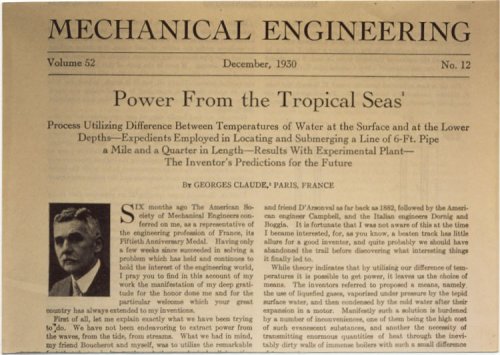
Fig.3 Mechanical Engineering cover and article, from 1930
The main detractor's arguments related to the power needed for pumping deep sea water and extracting gas that would overcome the gross power of the plant, the heating of deep sea water during its ascending trip to the plant and also skepticism about the capacity for the piping to resist the harsh marine environment .Claude, after having demonstrated the thermodynamic validity of Open Cycle OTEC with his Ougree experiment2, decided to go one step ahead to demonstrate OTEC feasibility when using sea water in a tropical on shore Open Cycle plant. The site chosen was located on the island of Cuba in the Caribbean.
1.Ocean Thermal Energy Conversion. OTEC
The Cuban Epic
he Cuban installation was designed to run the 60 kW machinery previously used in Ougree with a cold water pipe 2 meters in diameter. A pipe not larger than 0.6 meter in diameter would have been large enough to feed the turbine, but the pipe diameter and the pumping equipment were intentionally oversized to minimize the warming up of the deep water during its ascent to the surface. Another reason being probably to better approach the difficulties to install and maintain at sea a pipe of a size close to that necessary to run small commercial plants of few Mega Watts.
Claude was a dynamic individual who did not believe in endless desk studies. Hence when he needed to find an appropriate site in Cuba he carried out the survey himself in 1927 using his own yacht the "Jamaica". This survey revealed a general topography feature around the island consisting of a submerged gentle slope from land to about 20 to 30 meters depth followed by a vertical cliff of 100 to 200 meters. This unexpected feature would not allow the pipe to lie all along its length on the bottom as originally planned. It would have to drop down "like an huge arch' to the depth of 700 meters, which was the maximum one could find in the bay. This imposed to find a site with a coastal current as small as possible to minimize the stress on the suspended portion of the pipe. The choice was to site the plant in the Bay of Matanzas, 10 km from the town of Matanzas and 100 km East of Havana, where currents were steadily under half a knot.
Building the OTEC Plant
The construction of the plant, the pit for cold water and the 50 meters long trench to bury and protect the landing part of the cold water pipe began early in 1929. During the same time in the customs house of Matanzas the cold water pipe was made out of 2 meters steel cylinders 2 millimeters thick "deeply corrugated" which had been transported from France. It was welded together in lengths of 22 meters with flange ends and rubber gaskets, and finally painted and insulated. Sufficient lengths were stored at the wharf of the Munson Line located 2 kilometers away, awaiting floating out and connecting together at sea to form a 2000 meters long cold water pipe. This last phase of the pipe construction had been scheduled during a few days period of calm weather during the fine season, but rough sea condition unexpected in that period of the year resulted in loss of some hundreds of metres of pipe. Today we have the advantage of improved weather forecasting that helps to minimize the risk involved in such an operation.
This accident, due to both rather hazardous site location and poor meteorological forecast, obliged Claude to modify his plan for the pipe installation. He decided to assemble the cold water pipe on a river, the Rio Canimar (because of the crocodiles living there) that runs into Matanzas Bay. The river was rather sinuous and meandering, but Claude knew the long pipe was flexible enough to adapt the windings of the river.
They first had to dredge a 250 meters wide sand bar that was partially obstructing the mouth of the river. Next they transported one by one the 22 meters pipe lengths with their attached floats across the bay far enough upstream the river and assembled them while maintaining the assembly anchored on concrete blocks sunk in the river. This was achieved by towing using steam powered tugs. At the end of August 1929 the pipe assembly was completed and ready to be towed out from the river down to the plant site in the bay 7 km away from the river's mouth. This was a one shot operation, since towing back the pipe in the river would be impossible because of the adverse currents. With a favourable several day weather forecast the signal was given to the tugboats to start pulling the pipe out of the river. Unfortunately the middle part of the pipe ran aground on an undredged portion of the sand bar at the river's mouth and its rear "folded into an accordion and suffered severely" However, the pipe was freed and refloated during the night thanks to the combination of the high tide and the efforts of the tugboats. Unfortunately it had been seriously damaged and the whole pipe sunk in 500 meters depth of water a few hours later on its way to the plant site. Unfortunately Claude did not have the advantage of modern maneuverable tugs with precise satellite based positioning systems.
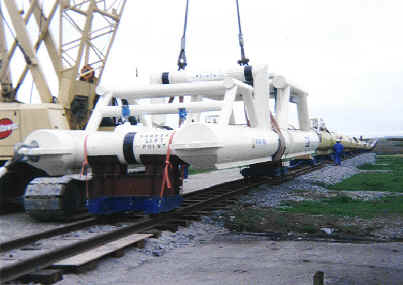
Fig. 4 Modern Day Deployment of an Oil and gas Pipeline Bundle
The budget allowed to Claude by his partners was gone and Claude decided to take charge, at his own expense, the construction and installation of a third pipe. This was an example of Claude's tenacity or stubbornness, which is perhaps one of the key characteristics of a great engineer. Under the suggestion of "Senior Vasquez", a Cuban engineer put at Claude's disposal by the Cuban Government, a new procedure was adopted. The bright idea was to assemble pipe portions on small wagons traveling on a railroad track laid perpendicular to the coastline behind the plant and to pull it to sea by winches and tugs. It is fascinating to note that this is the same methodology used today to launch oil and gas pipeline bundles (see Fig. 4). This is also the method that was used to launch the CWP used for the "OTEC-1" 1 MW size test ship deployed by the Americans in 1981 (see Fig. 5).
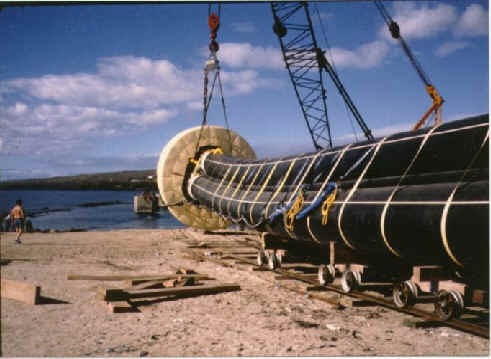
Fig. 5 Deployment of the OTEC- 1 CWP in 1981
The manufacturing of the third pipe began at the beginning of March 1930. It was 1.6 meters in diameter and made "entirely on the spot of Armco sheet 3 mm thick, rolled, welded, corrugated and insulated". To minimize the risk of installing in one run the whole 2000 meters long and 400 tones pipe assembly, the procedure was to install it in sections. The first CWP section (A) of 150 meters would run from the cold water pit dug on land down to a depth of 18 meters. Then a second length (C) of 1750 meters of pipe would be positioned to allow easy connection in shallow water to part (A) by hard hat divers thanks to a third portion of the CWP (B), the length of which had been adjusted to fit the gap between (A) and (C) see Fig 6. Interestingly today the cold water pit is known as Claude's pool and is a favourite swimming spot for local Matanzas Bay school children.
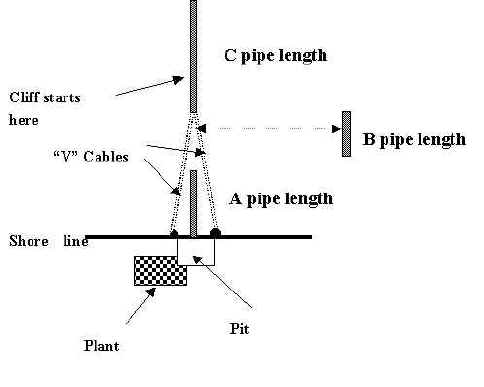
Fig. 6 Schematic Plan View of the Deployment of Claude's CWP
After an unsuccessful trial, part (A) was installed on June 8, 1930 and the trench filled up with concrete to avoid this landing part of the CWP from being damage by wave forces. Seventeen days later from the rail track close to the sea the pipe was pulled and positioned by no less than 12 tugboats in the direction of the landing trench. The (C) part was maintained in proper position by two "V" shaped cables moored onshore from each side of the pit. The final maneuver was to gently sink the CWP by deflating the floats starting from the shore end towards the sea. Unfortunately as reported by Claude "his written order was not respected" and the pipe was sunk the sea end first, overloading the mooring cables which "gave way and the tube went to joint the first" Sadly Claude did not have the benefit of walkie talkie radios and instead had to rely on megaphones for communications ! Thus if something started to go wrong during the operation it was difficult to pass on the instructions necessary to correct it.
Once again Claude decided not to give up even though his fortune was being depleted at an alarming rate. A third tube was constructed, pulled to sea on September 7th, 1930 and sunk at the right position to be connected to the intermediate section (B).
Operating the OTEC Machinery
A few days latter the cold water was pumped ashore at the rate of 4 cubic meters per hour and the temperature in the pit came down to 13 ¢XC. Claude "assumed" the temperature at the lower end of the tube was "probably" around 11 ¢XC, but he probably did not have the required instrumentation to confirm this. After adjusting the outflow to 1 cubic meter, i.e. to a velocity of 0.5 meter per second in the tube, the head loss measured in the pit was 3 meters. Some days latter a test of the boiling sea water under a vacuum showed that it was acting like fresh "pure water" without producing foam that, as some Claude's detractors had predicted, could have severely jeopardized the operation. Finally the small Ougree turbine was run with power slowly increasing up to 22 kW with equal inflows of 0.2 cubic meters per sec for warm water at 27 ¢XC and cold water at 13¢XC3. and outflows from boiler and condenser at 25 and 15 ¢XC. This allowed Claude to estimate a "mean 300 gross kW or 240 net kW for every cubic meter of cold water per second and a difference in temperature of 24 ¢XC" without accounting for the "numerous possibilities of improvement" His conviction strengthened by the success of the experiment led Claude to propose a 25 net MW OTEC plant in the "vicinity of Santiago de Cuba". He was considering this 25 MW plant as a necessary step forward to large commercial OTEC systems of "hundreds of thousands of kW" at price as low as $60 (1930)4 . We know today Claude failed to collect the funds necessary for building the Santiago plant. However, he continued to pursue his goal concentrating on a floating system with a vertical CWP, the same approach was used in Mini OTEC, the first system ever to produce net power from the ocean's thermal gradients in 1979.
Note. Most of the material for this article is extracted from the following references:
A."Power from the tropical seas", by Georges
Claude. Mechanical Engineering Vol 52, December, 1930. N¢X 12 ,
in
English, pages 1039 -1044.
B.Histoire et politique en matiere d'energie
thermique des mers, by Jean-Marc Meurville. These de DEA.
CNAM,
septembre 1995, pages 36 a
42.
C.? Ma vie et mes inventions ?, G.Claude, Plon, 1957, in French, pages 135 a 145.
Footnote
Following an initial Scottish Trade Mission to Cuba in November 2000, Martin Brown is hoping to arrange an expedition to Matanzas Bay to explore what remains of Claude's experiments. The hope is to collect sufficient material to support a TV documentary on Claude's work and the potential of OTEC in general. Any fellow OTEC supporters who might be interested in joining such an expedition are encouraged to contact Martin. In addition, Martin is anxious to track down any drawings or photographs of the layout of Claude's experiments at Matanzas Bay.